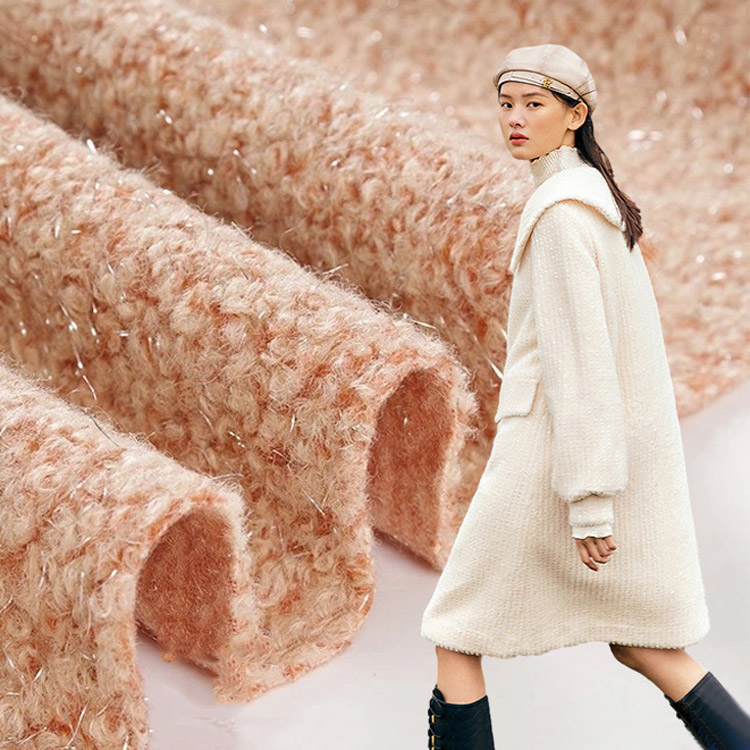Why Is Light Woolen Fabric Becoming the Preferred Choice for Modern Apparel?
2025-11-19
Light woolen fabric refers to a category of lightweight wool textiles engineered through refined spinning, teasing, and weaving technologies to create a soft, breathable, and thermally balanced material suitable for all-season wear. Unlike traditional heavy wool fabrics, this lighter version maintains the natural advantages of wool—insulation, elasticity, moisture-regulation—while offering improved drape, reduced weight, and enhanced wearing comfort.
Key Product Parameters of Light Woolen Fabric
| Parameter Category | Specification Details |
|---|---|
| Fiber Composition | 100% fine wool / wool-polyester blend / wool-viscose blend / wool-nylon blend |
| Yarn Count | 48s–80s, depending on desired fineness and softness |
| Fabric Weight | 150–280 g/m² (lightweight category) |
| Weave Structure | Twill, plain weave, herringbone, gabardine, jacquard |
| Finishing Process | Decatizing, softening, anti-pilling finish, shrink-resistant treatment |
| Breathability Index | 350–550 mm/s (high air permeability) |
| Thermal Insulation | Suitable for mild to cool climates; natural temperature regulation |
| Recommended Applications | Coats, suits, skirts, trousers, dresses, light jackets, scarves, upholstery |
This framework creates clarity for designers, buyers, and manufacturers evaluating Light Woolen Fabric for performance and consistency.
Why Does Light Woolen Fabric Offer Strong Advantages for Clothing and Accessories?
Why Does Light Woolen Fabric Provide Superior Comfort?
Light woolen fabric benefits from the microscopic crimp structure of wool fibers, creating natural air pockets within the textile that trap warmth while maintaining breathability. Unlike synthetic fibers that can cause heat buildup, this fabric allows moisture vapor to escape, keeping the wearer dry and comfortable. The soft finishing process further reduces fiber stiffness, eliminating itchiness and creating a smooth touch.
Why Does the Fabric Maintain Shape Better Than Many Alternatives?
Wool fibers have high elasticity due to their natural protein structure. They can bend thousands of times without breaking, allowing garments made from Light Woolen Fabric to resist deformation. This property prevents sagging at stress points such as elbows, knees, or cuffs. The resilience also supports sharp tailoring lines for suits, jackets, and skirts.
Why Is Durability a Key Advantage?
The combination of high-twist yarns, tightly controlled weave structures, and specialized finishing treatments enhances resistance to abrasion, pilling, and breakage. When properly cared for, Light Woolen Fabric garments maintain their appearance for years, outperforming many lightweight synthetic fabrics in longevity.
Why Is It Suitable for Both Casual and Formal Apparel?
The versatility of Light Woolen Fabric stems from its balanced weight and refined structure. It drapes naturally for dresses and coats while offering crispness for formal garments. The adaptability allows fashion designers to create diverse collections—from business wear to streetwear—without compromising comfort.
How Does Light Woolen Fabric Function Across Different Applications and Industries?
How Does It Perform in Fashion Apparel?
In fashion apparel, Light Woolen Fabric supports precise tailoring while giving designers flexibility to shape unique silhouettes. It enhances the quality of trench coats, blazers, skirts, and dresses. The fabric’s ability to regulate body temperature makes it ideal for transitional seasons, reducing the need for multiple wardrobe layers.
How Does It Support Outdoor and Travel Wear?
Light woolen materials are excellent for outdoor clothing due to their moisture-wicking capability and natural temperature control. They help maintain comfort across varying climates, making them favored materials for travel apparel, lightweight coats, and scarves. The odor-resistant nature of wool further enhances practicality for long-term wear.
How Does It Enhance Home and Lifestyle Products?
Beyond garments, the fabric is also used in upholstery, cushion covers, decorative throws, and light blankets. Its refined texture and warm aesthetic bring a sophisticated feel to interior spaces while maintaining durability.
How Does It Reduce Environmental Impact?
Wool is a biodegradable, renewable resource. Light Woolen Fabric requires less energy to produce compared with heavy woolen materials and is often finished using eco-friendly processes. Moreover, wool’s durability reduces waste, as garments last longer and require less frequent replacement.
What Are the Future Trends Shaping the Light Woolen Fabric Industry?
Growing Demand for Lightweight Natural Fibers
Consumers increasingly prefer breathable, natural materials over synthetic fibers. Light woolen textiles fit this shift by offering ecological benefits and long-term wearability.
Blended Fiber Innovations
Future fabrics are expected to incorporate blends with plant fibers, recycled polyester, and nanofiber technologies. These blends aim to enhance softness, moisture control, and tensile strength without compromising wool’s natural characteristics.
Advanced Finishing Technologies
Emerging treatments like enzyme finishing, anti-wrinkle coatings, and enhanced shrink-proof processes allow manufacturers to produce fabrics with improved texture and functionality. This results in lighter, smoother, and more resilient woolen textiles.
Design Trends Favoring Light, Layered Styling
Fashion trends favor layering and minimalist tailoring, both of which rely on fabrics with excellent drape and reduced bulk. Light Woolen Fabric supports these design principles, making it likely to remain relevant for years.
Sustainability as a Core Industry Driver
Manufacturers are adopting eco-certified dyes, water-saving finishing techniques, and traceable wool sourcing. As sustainability becomes mandatory rather than optional, Light Woolen Fabric will continue to evolve to meet global environmental standards.
Common FAQs About Light Woolen Fabric
Q1: Is Light Woolen Fabric suitable for warm climates?
A1: Yes. Light Woolen Fabric offers natural temperature regulation due to its breathable fiber structure. It releases excess heat and moisture, making it suitable for warm days and humid regions. Its insulation activates only when temperatures drop, providing year-round comfort.
Q2: How should Light Woolen Fabric garments be maintained?
A2: Most garments can be gently dry-cleaned or spot-cleaned using mild detergents. The fabric resists odors and requires less washing than synthetic materials. Storing garments in breathable garment bags and avoiding high-heat drying helps preserve fiber structure.
Q3: Does Light Woolen Fabric wrinkle easily?
A3: No. Wool fibers naturally spring back due to their elastic structure. After folding or pressure, the fabric recovers quickly. Proper finishing enhances wrinkle resistance, making it ideal for travel and everyday professional wear.
Conclusion
Light Woolen Fabric continues to gain recognition for its versatility, comfort, and performance. It meets the evolving needs of modern apparel designers, consumers, and brands seeking balance between functionality and aesthetics. With strong advantages in breathability, insulation, durability, and sustainability, it remains a leading choice across fashion, home textiles, and lifestyle products. As demand grows for high-quality natural materials, Light Woolen Fabric will play an increasingly significant role in textile innovation and future market development.
This high-value fabric is supported by manufacturers like Jufei Textile, known for its commitment to refined craftsmanship, quality stability, and professional customization services.
For sourcing inquiries, product details, or business cooperation, contact us to explore more possibilities.



